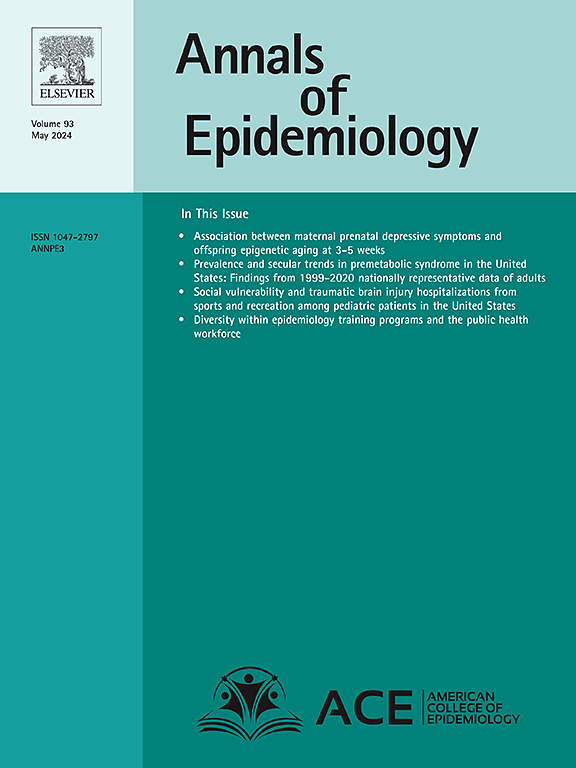美国青少年童年不良经历的父母代理报告与青少年自我报告的一致性。
IF 3
3区 医学
Q1 PUBLIC, ENVIRONMENTAL & OCCUPATIONAL HEALTH
引用次数: 0
摘要
目的:有关青少年童年不良经历(ACEs)的数据是通过单一信息提供者、父母代理或青少年自我报告收集的。目前对这些方法之间的一致性还知之甚少:我们使用 AmeriSpeak 小组对 15-17 岁的青少年及其父母(522 对)进行了在线调查。我们根据青少年自我报告和父母代理报告,对 18 种 ACE 的流行率和测量一致性进行了描述性统计。我们拟合了多变量模型,研究青少年和家庭人口特征与 ACE 报告不一致之间的关联:结果:根据青少年自我报告和家长代理报告,累积和个别 ACE 发生率总体上相似。然而,在青少年-家长二人组中,个别 ACE 报告存在不一致的情况(不一致程度在 2.9% - 21.2% 之间)。与虐待、忽视和暴力侵害相关的 ACE 的一致性最低,而与家庭挑战相关的 ACE 的一致性最高。此外,有女同性恋、男同性恋、双性恋和变性青少年(与异性恋青少年相比)以及黑人、西班牙裔和多种族或其他种族青少年(与白人青少年相比)的父母-青少年组合更有可能在几项ACE中出现不一致的反应:结论:在使用数据为预防策略提供信息时,监测和计划工作应考虑到 ACE 的类型和报告者。青少年自我报告的虐待、忽视和暴力伤害以及社区挑战 ACE 尤为重要。本文章由计算机程序翻译,如有差异,请以英文原文为准。
Alignment of parent-proxy report and teen self-report of adverse childhood experiences among U.S. teens
Purpose
Data on adverse childhood experiences (ACEs) among teens is collected using a single informant, a parent-proxy, or teen self-report. Little is known about alignment between these approaches.
Methods
Surveys were administered online to teens ages 15–17 and their parents (n = 522 dyads) using the AmeriSpeak panel. We present descriptive statistics on the prevalence and measures agreement for 18 ACEs based on teen self-report and parent-proxy report. We fit multivariable models examining associations between teen and household demographic characteristics and discordance in ACE report.
Results
Based on teen-self report and parent-proxy report, cumulative and individual ACE prevalence was overall similar. However, discordance was found in individual ACE reports within teen-parent dyads (discordance ranged: 2.9–21.2 %). Lowest agreement was among ACEs related to abuse, neglect, and violence victimization and highest among household challenges. Furthermore, parent-teen dyads with LGB+ youth (vs. heterosexual) and Black, Hispanic, and multiracial or another race (vs. White) youth were more likely to have discordant responses among several ACEs.
Conclusions
Surveillance and programmatic efforts should consider the type of ACE and the reporter when using data to inform prevention strategies. Teen self-report for abuse, neglect, and violence victimization and community challenges ACEs are particularly important to capture.
求助全文
通过发布文献求助,成功后即可免费获取论文全文。
去求助
来源期刊

Annals of Epidemiology
医学-公共卫生、环境卫生与职业卫生
CiteScore
7.40
自引率
1.80%
发文量
207
审稿时长
59 days
期刊介绍:
The journal emphasizes the application of epidemiologic methods to issues that affect the distribution and determinants of human illness in diverse contexts. Its primary focus is on chronic and acute conditions of diverse etiologies and of major importance to clinical medicine, public health, and health care delivery.
 求助内容:
求助内容: 应助结果提醒方式:
应助结果提醒方式:


